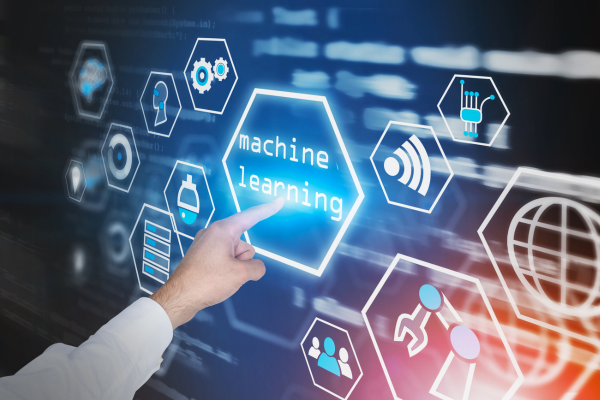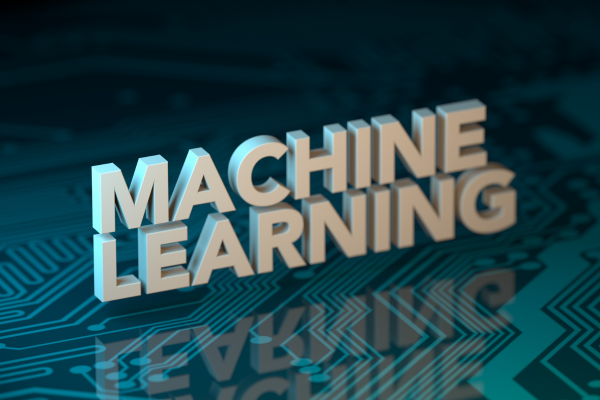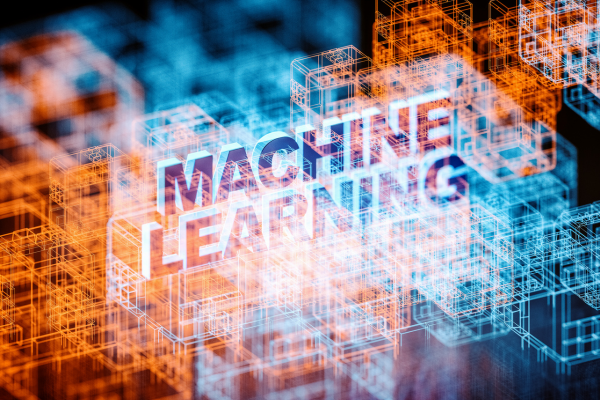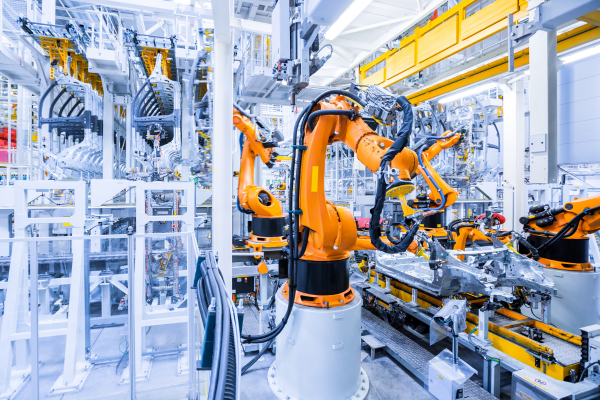Whether you’re a beginner or an experienced analyst, understanding and leveraging machine learning is becoming more important by the minute.
Machine learning is a subset of artificial intelligence that focuses on developing algorithms and statistical models that computers can use effectively to perform a task. The key part? The computer performs a task without any specific instructions, hence the word “learning.”
There are 3 main types of machine learning:
- Supervised learning
- Unsupervised learning
- Reinforcement learning
We’ll explain all 3 below
Let’s get into it!
1.Supervised Learning

Supervised learning involves training a model on labeled data, which means the input-output pairs are known. It seeks to generalize patterns discovered in previously seen data so that it can predict unseen data by mapping inputs to outputs.
There are two primary types of supervised learning:
1. Classification Models
2. Regression Models
1. Classification Models
Classification models are used to predict class labels. The most common are:
- Decision Trees
- Support Vector Machines (SVM)
- Random Forest
- Neural Networks
Decision Trees
- A tree structure splits the data into subsets, with each split being based on the most informative feature.
- Easy interpretation and data visualization.
- Use case: diagnosing a disease based on symptoms and test results.
Support Vector Machines (SVM)
- Binary classifiers that find the hyperplane that best separates data points from different classes.
- Can be extended to multi-class problems.
- Can work with both linear and non-linear data.
- Use case: classify text documents into categories.
Random Forest
- An ensemble approach combining multiple decision trees.
- Helps to overcome the overfitting problem in individual trees.
- Helps to improve the model’s generalization performance.
- Use case: predict which species a plant belongs to based on its measurements.
Neural Networks
- Flexible and powerful models inspired by the human brain.
- Capable of learning complex patterns from large datasets.
- Use case: detecting objects and animals in images.
2. Regression Models
Regression models are used to predict continuous values. The three common machine learning models are:
- Linear Regression
- Logistic Regression
- Gradient Boosting
Linear Regression
This regression model fits a line to the data using a single dependent variable and one or more independent variables.
- Use case: Predicting house prices based on area, age, and features.
Logistic Regression
Logistic regression tasks predict class probabilities given a set of input features.
- Use case: Predicting if a customer will churn or not based on their activity data.
Gradient Boosting
This is an ensemble model that combines several weak learning models, like decision trees, to create a powerful regression or classification model.
- Use case: Predicting the probability that a customer will buy a product based on their browsing and purchase history.
2.Unsupervised Learning

Unsupervised learning deals with unlabeled data, meaning that the model has no knowledge of the correct output. The goal of unsupervised learning is to discover hidden structures, patterns, or relationships within the data.
It can be grouped into two main categories:
- Clustering Models
- Dimensionality Reduction
1. Clustering Models
Clustering involves grouping similar observations or data points based on their features, without knowing the actual labels.
K-Means clustering is the most common unsupervised machine learning algorithm. It segregates data into K clusters, based on the mean distance from the centroids of the clusters.
- Use case 1: customer segmentation.
- Use case 2: image compression.
2. Dimensionality Reduction
This algorithm involves reducing the number of features, while retaining the essential information.
- Use case 1: Principal Component Analysis (PCA).
- Use case 2: t-Distributed Stochastic Neighbor Embedding (t-SNE).
3.Reinforcement Learning

Reinforcement learning focuses on training an agent to interact with an environment to achieve a specific goal by learning a policy. The agent receives feedback from the environment in the form of rewards or penalties, which helps it understand the consequences of its actions.
Reinforcement learning is used in applications such as robotics, game playing, and autonomous vehicles.
5 Key Elements
- Environment – The world in which the agent operates.
- Agent – The entity that learns and makes decisions.
- Actions – The choices the agent has in each state.
- States – The different situations the agent may encounter.
- Rewards – The feedback received by the agent for its actions.
Popular Reinforcement Learning Algorithms
- Q-Learning
- Deep Q-Network (DQN)
- Advantage Actor-Critic (A2C)
- Proximal Policy Optimization (PPO)
Recommended Systems

Recommender systems suggest items to users based on their preferences, behavior, or item features. Some popular techniques in recommender systems are:
- Collaborative Filtering
- Content-Based Filtering
1. Collaborative Filtering
This technique uses the similarity between users and/or items to suggest items that similar users have liked or those that have similar characteristics to items the user has liked.
- Use case: recommending movies to users on a streaming platform based on their watching history and the watching history of similar users.
2. Content-Based Filtering
This technique uses the features of items to suggest items that are similar to those the user has liked in the past.
- Use case: recommending articles to a user based on the articles they have read and those with similar content.
Performance and Evaluation Metrics

When assessing machine learning models, you should have a good understanding of these performance and evaluation metrics:
- Accuracy and error
- Bias and variance
- ROC
- AUC
1. Accuracy And Error
Accuracy measures the proportion of correct predictions out of the total predictions made. This is the formula:
accuracy = (True Positives + True Negatives) / (Total Predictions)
Other relevant metrics include:
- Error: The proportion of incorrect predictions, calculated as 1 – accuracy.
- Precision: The percentage of true positives among all positive predictions.
- Recall: The percentage of true positives among all actual positive instances.
- F1-score: The harmonic mean of precision and recall, used to balance the two metrics.
2. Bias and Variance
Bias and variance help indicate potential issues with the model:
- Bias: A high-bias model makes consistent errors, often oversimplifying the problem. This results in poor performance on both the training and test data.
- Variance: A high-variance model overly adapts to the training data, capturing too much noise and failing to generalize well to new data.
3. ROC
ROC stands for Receiver Operating Characteristic. It’s a curve that displays the relationship between True Positive Rate (TPR) and False Positive Rate (FPR) at various thresholds.
4. AUC
AUC stands for Area Under the Curve. It measures the area under the ROC curve, providing a single value that represents the overall performance of the model.
Models with higher AUC values are generally considered better classifiers.
Best Practices for Machine Learning

1. Data Preparation
Proper data preparation is a crucial step in the machine learning process. It involves:
- Segment your training and test set: a typical split is 80% for training and 20% for testing.
- Handle missing values by filling with mean values or removing rows with missing values.
- Scale or normalize features with varying ranges to ensure equal importance is given to each feature during the model training.
2. Feature Selection
Feature selection enables the identification of relevant and important features. Techniques to consider include:
- Correlation analysis: identify highly correlated features and remove one to avoid multicollinearity.
- Principal component analysis (PCA): PCA can be used to reduce dimensionality by projecting features onto a lower-dimensional space while preserving the maximum variance.
- Domain knowledge: leverage knowledge in the specific field to decide which features are most relevant to the problem being solved.
3. Model Selection
Selecting the right model for your problem is critical. Keep in mind the following considerations:
- Algorithms: try different algorithms to find the one that best suits your input data.
- Likelihood: compare different models based on their likelihood to produce accurate predictions.
- Regularization: employ regularization techniques, such as L1 or L2, to prevent overfitting and improve model generalization.
4. Model Validation
Model validation ensures the model’s performance and helps detect overfitting. Some strategies to employ are:
- Cross-validation: split the training data into multiple segments (folds) and train the model multiple times, using a different fold for validation each time.
- Performance metrics: choose appropriate metrics to evaluate your model, like accuracy, precision, recall, F1-score, or Root Mean Squared Error (RMSE).
- Learning curves: plot the learning curve to observe the performance of your model as the training set size increases.
Deep Learning and Advanced Techniques

In this section, we’re going to go over the fascinating world of deep learning and its advanced techniques. Deep Learning has been at the forefront of many groundbreaking advancements in artificial intelligence, from image recognition to natural language processing.
We’ll explore neural networks, time series forecasting, and natural language processing.
1. Neural Networks and Deep Learning
Deep learning uses neural networks to analyze and process data. Neural networks consist of layers of interconnected nodes or neurons.
Training a neural network involves updating weights through forward propagation, back propagation, and gradient descent. This series of updates results in improved model performance.
Some advantages of deep learning include:
- Handling large amounts of data
- Automatic feature extraction
- Improved performance over traditional machine learning
2. Time Series Forecasting
Time series forecasting involves predicting future trends or values based on historical data. Some popular algorithms for time series forecasting include:
- Autoregressive Integrated Moving Average (ARIMA)
- Long Short Term Memory (LSTM) neural networks
- Prophet
Here are aspects to consider when using time series forecasting:
- Preprocess data: handle missing values and remove noise.
- Feature engineering: extract relevant features from the data.
- Model selection: choose an appropriate algorithm to fit the data.
- Model evaluation: assess the performance of the model using metrics like Mean Absolute Error (MAE) and Root Mean Squared Error (RMSE).
3. Natural Language Processing
Natural Language Processing (NLP) is a subfield of AI that enables machines to understand, interpret, and generate human language. Some common techniques and applications in NLP include:
- Sentiment analysis
- Machine translation
- Text classification
- Named Entity Recognition (NER)
Deep learning can significantly improve NLP tasks with models like:
- Recurrent Neural Networks (RNNs)
- Long Short-Term Memory (LSTM) networks
- Transformers, e.g., BERT, GPT-3
When working with NLP tasks, it is crucial to preprocess the text data (tokenization, stemming, stop word removal) and select appropriate models to achieve the best results.
Machine Learning Libraries and Tools

Here is a brief overview of some popular machine learning libraries, with a focus on Python libraries, Azure Machine Learning, and a few other noteworthy options.
1. Python Libraries
- Scikit-Learn: covers multiple classification, regression, and clustering algorithms, including support vector machines (SVM). It’s built on libraries like NumPy.
- TensorFlow: developed by Google Brain for working with deep learning neural networks. Widely used for image and text recognition tasks.
- Keras: a high-level neural network library that runs on top of TensorFlow, Microsoft Cognitive Toolkit (CNTK), or Theano. Ideal for those who are new to deep learning.
Here are additional resources to get started with these libraries:
2. Azure Machine Learning
Azure Machine Learning is a cloud service provided by Microsoft. Some of the algorithms available within the Azure Machine Learning library include:
- Linear Regression
- Logistic Regression
- Neural Network
- Naïve Bayes
- Decision Forest
- k-Means Clustering
3. PyTorch
This open-source machine learning library was built by Facebook’s artificial intelligence research group. It features dynamic neural networks and an extensive ecosystem of complementary tools.
4. XGBoost
This is a popular library for gradient boosting, which has gained recognition for its speed and performance. It is designed for both Python and R programming languages and provides a flexible boost to tree architecture, along with regularized objective functions.
Applications of Machine Learning

Some of the most significant applications of machine learning are:
- Predictive Analytics
- Robotics and Automation
- Custom Algorithm Development
1. Predictive Analytics
By using a prediction model, companies can make future predictions using data that has been previously obtained. Some potential uses of predictive analytics include:
- Reducing customer churn
- Enhancing targeted marketing
- Optimizing supply chain management
2. Robotics and Automation
By applying machine learning algorithms, robots and automated systems can learn from their experiences, correct their behavior, and make decisions based on the patterns and trends identified in the collected data. Some areas where robotics and automation benefit from machine learning include:
- Natural Language Processing (NLP)
- Computer Vision
- Self-driving cars
3. Custom Algorithm Development
Machine learning experts can develop tailor-made algorithms to solve unique problems specific to an industry or organization. Some areas where custom algorithms are beneficial include:
- Fraud detection and risk management
- Personalized recommendations
- Medical diagnosis and treatment planning
Challenges and Considerations of Machine Learning
In this section, we’ll delve into the challenges and considerations of machine learning. While Machine learning has revolutionized numerous fields, from healthcare to finance, it’s not without its complexities and potential pitfalls.
We’ll explore issues such as problem identification, ethical considerations, and model and environment selection.
1. Problem Identification
Identifying the right problem to solve using machine learning is crucial for achieving better performance. Some challenges to consider include:
- Task: Determine whether the ML task is a binary classification, clustering, or regression problem.
- Feedback: Evaluate the available feedback mechanisms to improve the model’s accuracy.
- Grouping: Consider problem patterns, like imbalanced classes or overlapping clusters, that may affect the model’s performance.
2. Ethics and Bias
Ethical concerns and bias are significant factors to address when using machine learning algorithms. Consider the following aspects:
- Data: pay attention to potential biases in the training data that may lead to unfair or harmful predictions.
- Irrelevant features: exclude irrelevant features that might introduce subtle biases or noise in the model.
- Sensitive attributes: identify and handle potentially sensitive attributes, such as gender, race, or age, that could introduce ethical concerns.
3. Model Size and Environment
Balancing the model size and computational resources is an essential consideration. Choose models according to the following criteria:
- Size: opt for models that balance both complexity and size, depending on the specific task and computational resources available.
- Environment: train and deploy models in a suitable environment for their task, considering factors like latency, energy consumption, and available infrastructure.
- Performance: evaluate model performance using appropriate metrics and consider trade-offs like accuracy vs. speed or complexity vs. interpretability.
Final Thoughts
This machine learning cheat sheet offers a compact, yet comprehensive overview of key concepts, algorithms, and best practices essential in the field of machine learning. It serves as an invaluable resource for novices to data analysis and seasoned practitioners alike.
It’s important to remember that the cheat sheet is a guide, not a comprehensive textbook. It should be used as a starting point for your learning journey or as a quick reference when needed.
You should also strive to keep up-to-date with what’s happening in the fast-changing world of machine learning and AI. Check out this video on the future of data technologies:











